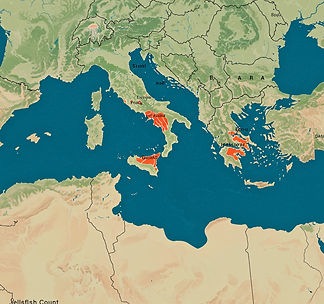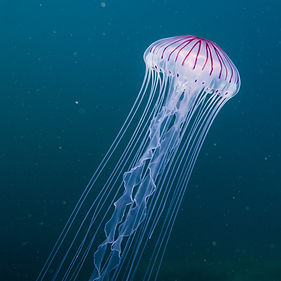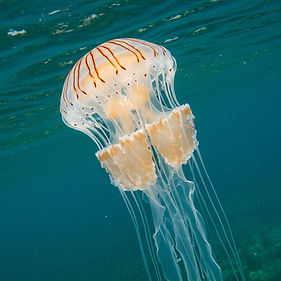A Guide to Jellyfish in the Mediterranean Sea
Jellyfish in the Mediterranean Sea Quick Facts
-
The Mediterranean Sea is home to several jellyfish species, most of which cause mild stings.
-
The most common species include the barrel jellyfish, moon jellyfish, and the mauve stinger (Pelagia noctiluca).
-
Jellyfish blooms, or large groups, are becoming more frequent, especially during warmer summer months.
-
The mauve stinger is a notable concern due to its painful sting and luminous appearance at night.
-
High-risk areas often include coastal regions of Italy, Greece, and Spain during peak season.

Key Mediterranean sea Jellyfish Species, Seasons, and Safety Tips
The Mediterranean Sea is renowned for its calm, blue waters and idyllic coastlines, attracting millions of travelers each year. However, beneath the surface lies a diverse marine ecosystem that includes a variety of jellyfish. While most stings from Mediterranean species are harmless and result in a minor rash, a few species can deliver a more painful sting, and being prepared is always the best approach.
One of the most common sights in the Mediterranean is the barrel jellyfish (Rhizostoma pulmo). These are large, beautiful jellyfish that, despite their size, are considered relatively harmless as their sting is very weak. A more significant concern is the mauve stinger (Pelagia noctiluca), a smaller but highly venomous species. Its sting is known to be quite painful, and its name comes from its bioluminescent nature, which can cause it to glow at night. The mauve stinger's blooms are often unpredictable and can arrive in large swarms, particularly during warmer periods.
Jellyfish sightings are most frequent in the late summer and early autumn when water temperatures are at their highest. During these times, it's particularly important to check with local lifeguards or beach advisories.
If you are stung, the initial treatment is the same as the general advice: rinse the area with vinegar or saltwater to neutralize any stinging cells, and then carefully remove any remaining tentacles.

To give you more specific guidance for your travels, we've prepared detailed country-specific pages that cover local species, warning signs, and first-aid recommendations. You can find more information on the most common jellyfish in the coastal waters of:

